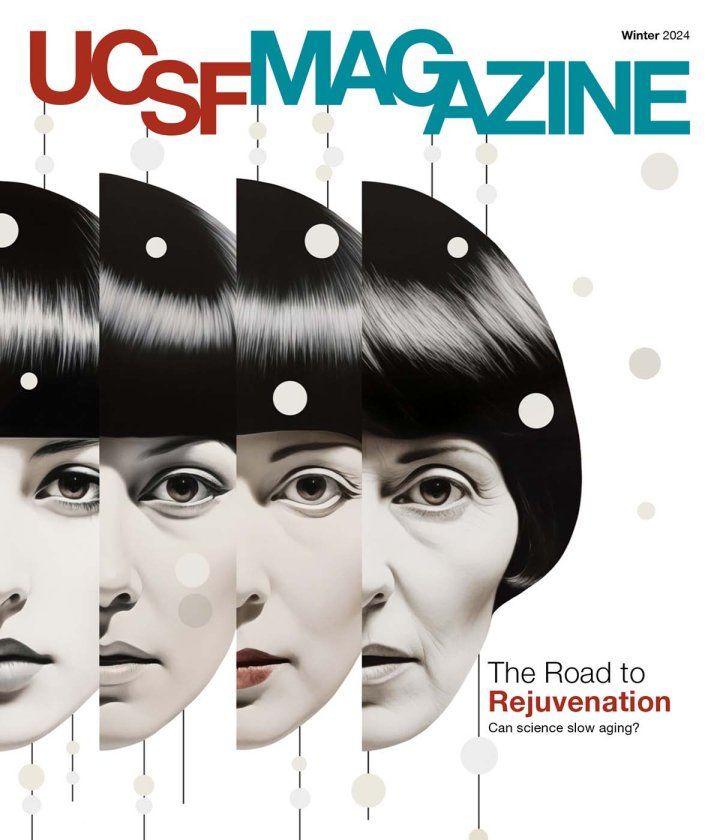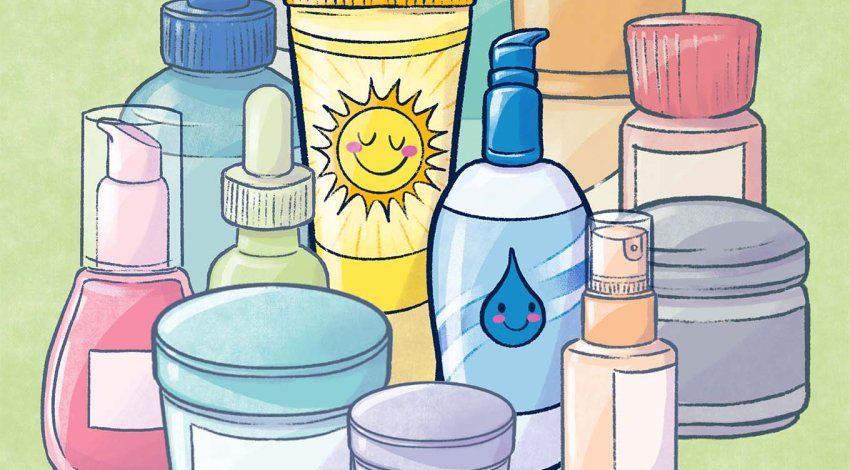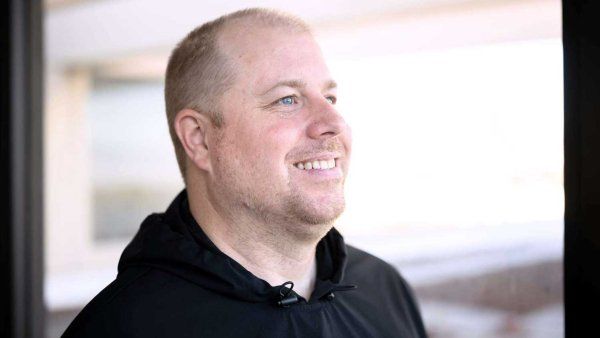
What’s the Truth Behind Popular Online Dental Myths?
Social media influencers are quick to share seemingly easy ideas and do-it-yourself dental hacks. But do TikTok trends save viewers a trip to the dentist – or cause tooth trouble?
Animation: Farah Hamade
The bright-eyed young woman with the gleaming smile is eager to let her TikTok followers in on a secret: You don’t need to go to the dentist to get your teeth whitened. Just follow her all-natural recipe – and don’t forget to like and share the video!
Like many social media tips, dental hacks like these are too good to be true. But given the hundreds of such videos – and the thousands of views for each one – the myths keep spreading.
We asked Eva Bender, DDS, an assistant professor of preventive and restorative dental sciences and a clinician at the UCSF Dental Center, for the real story behind popular online oral hygiene advice.
Myth #1
I can whiten my teeth with substances from my cupboard or fridge.
A scrub with products like lemon, strawberry, or papaya juice might deliver short-term sparkle to your smile. But they won’t be as effective as proven treatments, and you risk damaging your teeth.
Smoking, chewing tobacco, or drinking beverages like coffee, soda, or red wine can stain the surfaces of your teeth. Plenty of substances can help remove such stains, but they aren’t equally safe, Bender says.
Soaking or scrubbing your teeth with acidic substances, like fruit juices, invites cavities. The mouth is naturally slightly acidic because saliva’s average acidity measurement, or pH, is about 6.7, compared to water’s neutral pH of 7. The bacteria in plaque produce acid byproducts that further lower our oral pH. So bathing the mouth in even more acid diminishes saliva’s natural buffering effects, causing enamel to begin to dissolve and creating cavities.
Other online influencers advise whitening teeth with activated charcoal. It’s made of tiny, abrasive particles of porous carbon. However, just as a wire scrub brush might get gunk out of a dirty pan but also scratch the pan’s surface, activated charcoal might deliver a quick polish but, says Bender, pointing to a 2023 study, cause microscopic damage to the tooth enamel, potentially making it stain more easily in the long run.
“Enamel is a precious resource,” Bender says. “Since no dental restorative materials are as good as natural enamel, I’m going to steer away from anything that’s going to irreversibly change its surface hardness.”
So what whitens teeth without unnecessary risk? Treatments in a dentist’s office and over-the-counter products from well-known brands, which are tested and shown to be safe and effective if used correctly. Bender recommends discussing your whitening goals with your dental professional.
Myth #2
I’d better quit drinking carbonated water – it’s bad for my teeth.
No need to throw out your favorite seltzer! Sparkling water is more acidic than still water because of the dissolved carbon that makes those delightful bubbles. But the pH of the average sparkling water isn’t low enough to plunge your mouth into the danger zone of 5.5 and below, Bender says.
Tap water is typically the healthiest drink for teeth. Almost 75% of Americans get their water from community systems that are fluoridated, meaning the water has a small added amount of the mineral fluoride, in addition to naturally occurring fluoride. That helps protect teeth from decay – and even repairs some damage – by strengthening the enamel.
But if you want a different beverage for a treat, sparkling water is better than many alternatives, Bender says. In addition to carbonation, energy drinks and sodas also contain sugar and citric acid that feed plaque and dissolve enamel. And diet colas may be sugar-free but are high in acidic flavoring.
Your best choice is sugarless, unflavored sparkling water. If you prefer flavored water, check the label for fruit flavorings, especially citrus, which contain citric acid.
Myth #3
I can heal my cavities with a combination of vitamins and influencer-recommended toothpaste.
Cavities in the outer enamel that haven’t reached the underlying dentin can be repaired.
However, a magic-bullet toothpaste or vitamin regimen doesn’t exist. You’ll have to take a trip to the dentist to find and treat tooth decay. Strategic care can help heal and strengthen teeth by replacing lost minerals in enamel, a process called remineralization.
A bonus: Remineralized areas are harder to erode.
When a patient is practicing good oral hygiene, but X-rays show a high rate of decay, Bender starts a remineralization protocol. This includes fluoride varnish after dental cleanings and possibly more frequent office visits. For people with additional risks, such as cancer patients who received radiation treatments that dried up their salivary flow, Bender also prescribes MI Paste, a dental cream that contains the mineral building blocks of enamel.
Though MI Paste and some fluoride products are available online, Bender cautions against using them on your own. MI Paste is ineffective if applied at home like a regular toothpaste; in the office, a dentist applies it with customized trays to ensure it contacts the tooth surfaces that need repair.
Also, accidentally ingesting too much of a fluoride product can upset your stomach. While dentists can teach adults to properly apply fluoride treatments at home, children shouldn’t be given fluoride varnishes unsupervised. The products often have appealing flavors, which puts kids at risk of ingesting unhealthy amounts of them.
“You do need to partner with your dental professional,” Bender says. “Find out if you are one of those high-risk patients, and ask what strategies could be useful in helping keep your individual rate of decay more manageable.”
Myth #4
I can order dental tools online and clean my teeth better at home.
Don’t risk it. Just because a tool works well in the hands of your dentist doesn’t mean it’s easy or wise to try it yourself – and you aren’t going to learn how from YouTube.
Bender recalls a patient who noticed some residue left by fluoride varnish on his teeth and tried to remove it at home. He wound up in her office later that day with a broken front tooth that required a gigantic filling.
“If you’re not trained in the morphology of teeth or how to hold the edges of the instrument against the tooth properly, you can damage the tooth,” Bender says. “You can cause breakage and chipping. You can cause lacerations to the gum tissue, which can result in bleeding and infection. So it is very much not recommended.”
Bender does encourage patients to use familiar and safe oral hygiene tools. Everyone should brush their teeth at least twice a day – or, even better, after every meal. Frequency is more important than the type of brush you use, Bender says. And you really do need to floss at least once a day. Flossing breaks up bacterial colonies between teeth that no toothbrush can reach.
And when you have a question about oral hygiene, turn to a professional, not someone promoting do-it-yourself “solutions” on social media.
Bender recognizes that the U.S. health insurance system often limits people’s access to dental care, and they may not have their own dentist to call with questions. In that case, she recommends checking the websites of the American Dental Association or of tried-and-true companies like Colgate-Palmolive or Procter & Gamble, which manufacture Colgate and Crest toothpastes, respectively. Regional dental societies, like the California Dental Association, also offer free resources.




